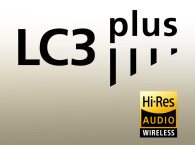
In the article interview titled "Changing the World of Wireless Audio: LC3 and Bluetooth Low Energy Audio," the Fraunhofer Institute for Integrated Circuits (Fraunhofer IIS) finally throws some light over the potential evolution of the latest Low Energy Audio (LE Audio) set of specifications, adopted in July 2022, and which introduce significant improvements to improve the user experience for mainstream wireless applications and hearing-aids.
The problem is, over the 10 years when this effort was taking place, the audio industry fully embraced high resolution digital formats as standard for recording, mastering and distribution. And even through the constrains of current music streaming distribution platforms, lossless hi-res audio streaming is fully supported and available.
One of the contributors to the LE Audio standard was Alexander Tschekalinskij, Senior Engineer in the Audio for Communications Department at Fraunhofer IIS, which in this recent interview for the Fraunhofer IIS blog, makes interesting statements regarding Bluetooth Low Energy Profiles related to audio applications and the potential evolution which is being overwhelmingly requested by the audio industry.

As Alexander Tschekalinskij confirms, Bluetooth LE Audio was developed to answer the requirements of reduced energy consumption, and the need to make critical applications - such as hearing aids - to evolve to a more robust and efficient solution. This included a request for a new audio codec from the Bluetooth SIG hearing aid working group, to which the Fraunhofer IIS and Ericsson responded by proposing the development of the LC3 codec.
"As LC3 ensures high audio quality at low bitrates, the codec was taken up by several Bluetooth audio working groups and eventually became the mandatory audio codec for Bluetooth LE Audio. The new LE Audio profiles that use the LC3 codec require significantly less energy than the legacy Bluetooth Classic profiles while enhancing the sound quality drastically and achieving lower bitrates as well as minimal latency. The Bluetooth working groups created a completely new architecture for wireless low-energy audio transmission. Today, this is considered the largest specification release Bluetooth has ever done."
In an interesting take, Tschekalinsij highlights two key points in this evolution. First, the fact that the LC3 rollout, as the mandatory audio codec for Bluetooth LE Audio, will introduce noticeable changes in the audio quality of phone calls, not only to music streaming. "Wireless phone calls will provide up to 32kHz sampling rate – that is twice as much bandwidth as before. This huge improvement will deliver a brighter, better-to-understand, and more lifelike sound. It is also a very important fact for the unbridled enjoyment of content with a lot of high-frequency information, like music, since LC3 delivers great quality even at lower data rates. In fact, the quality of LC3 exceeds the quality of the legacy Bluetooth Classic codec SBC while requiring only half its bitrate."
Second, Tschekalinskij addresses the question that had until now remained unanswered, of what can chip and device manufacturers, as well as finished product manufacturers do to offer high-end products to set themselves apart from the competition. And the solution, Tschekalinskij firmly believes, includes the LC3plus codec, co-invented and licensed by the Fraunhofer IIS, and which recently received the Hi-Res Audio Wireless certification logo issued by the Japan Audio Society, following an extensive objective and subjective testing process.
"For those who want to stay firmly ahead of the game, Fraunhofer IIS provides LC3plus High-Resolution. Thanks to it, audio content can be streamed with up to 96kHz and bit depths of up to 32 bit. And that at relatively low bitrates of 125 – 250 kbps per channel. Other codecs require at least two to three times that for a similar performance. The significantly lower bitrate required by LC3plus High-Resolution minimizes the probability of packet losses. Listeners benefit from a stable and uninterrupted connection even in challenging environments like a crowded subway."

And he uses the opportunity to illustrate the momentum for LC3plus in high quality audio applications. "These improvements make LC3plus the codec of choice for businesses such as Bang and Olufsen who used it for their high-resolution speaker range to deliver the best possible user experience. LC3plus ensures that highest fidelity content can be transmitted without any noticeable lag between individual devices. Adding the fact that it is an open standard, it becomes clear that LC3plus is the solution for the future of wireless entertainment systems."
LC3plus High-Resolution is ready to be used with the Bluetooth Classic A2DP profile. This is detailed in a technical paper by Fraunhofer IIS, which specifies the usage of LC3plus High-Resolution as a vendor-specific codec in Bluetooth A2DP. But Alexander Tschekalinskij says that's not all and reveals, "We are currently developing a similar specification to enable the codec as a vendor-specific solution in LE Audio."
When will this development effort be concluded? Will the Bluetooth SIG also confirm other codecs as "vendor-specific solutions in LE Audio"? These are just two of the many questions we would like to ask, but we are certain that no one will be able to answer at the moment. In fact, we still need to get confirmation that this Fraunhofer IIS "development effort" is effectively endorsed by the Bluetooth SIG.
www.bluetooth.com
www.iis.fraunhofer.de






